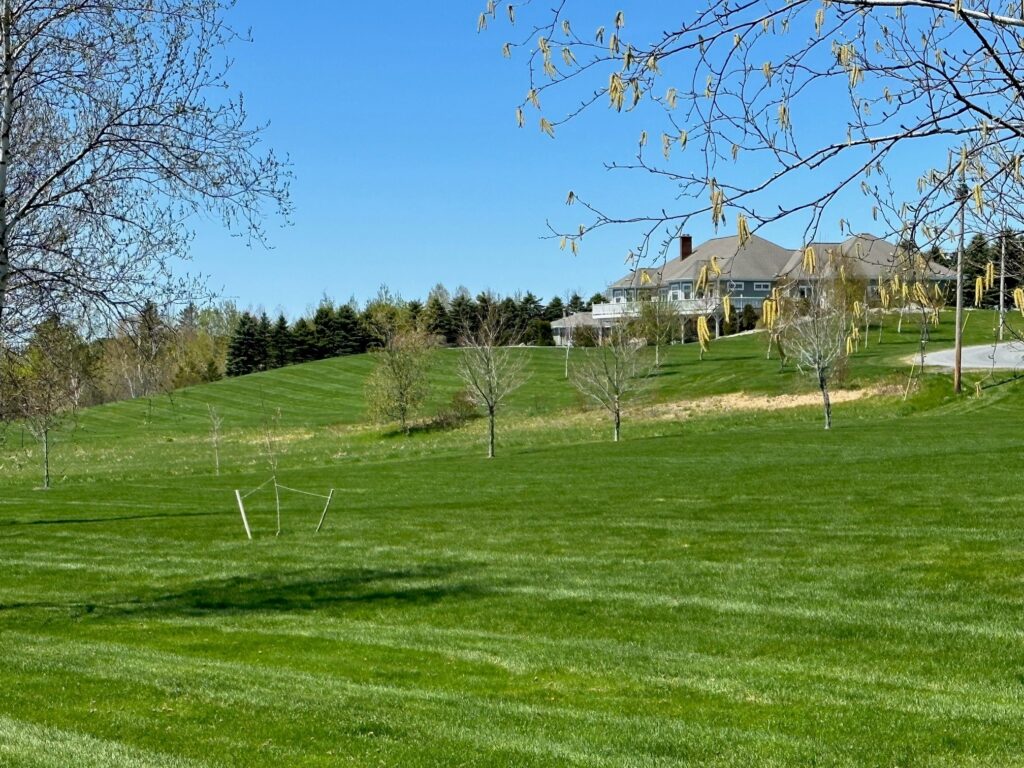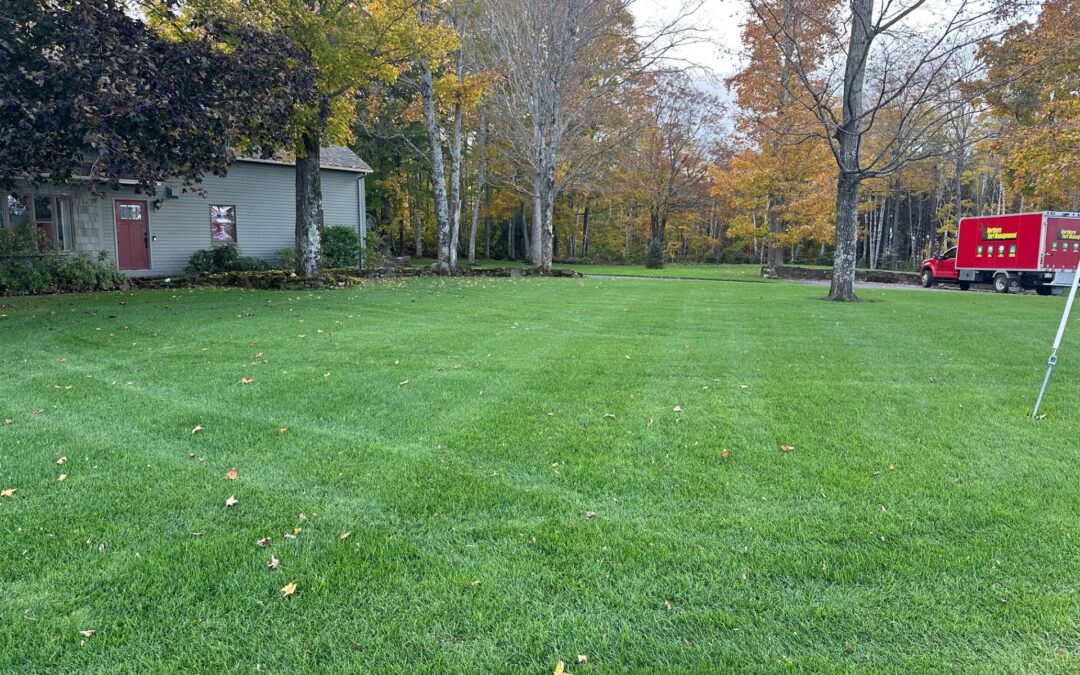As a professional lawn care service, often times we are asked by prospective customers what we need to do to make their lawn green and weed-free. While sometimes the answer may be as simple as A-B-C, most of the time “it depends” is the go-to response. Some lawns may only require a basic level of input to look perfect, while others may need a golf course-level regimen of care just to become halfway decent.
Why does my lawn need something different than my neighbors?
First, let’s dig into the “why” as to different input levels are needed, rather than the same thing across the board, There are three major pieces to the puzzle that we focus on to determine what your lawn needs:
Soil
While we see the leaf blades of our lawns, the individual turfgrass plants, the roots are truly the workhorse of the system. When soils contain a good balance of sand, silt, and clay, drain well but still retain some moisture, and are mostly free of stones they provide an optimum environment for turfgrass roots. If they can penetrate deep into the soil as well as spread laterally with ease, they create an extensive system that is easily able to support nutrient and water uptake which feeds the leaf blades. On the flip side, if soils drain too rapidly or hold excessive amounts of moisture it can spell trouble for those roots. With too little moisture, plants can dry out…too much and disease can take over. In addition, if soils are heavily compacted they inhibit how far vertically and laterally roots can spread.
Shade
While partial shade can be manageable when growing high-quality turfgrass, there is a certain level beyond which an acceptable stand of turfgrass cannot be reasonably maintained. Even when the turf receives the minimum level of sunlight needed to survive, several additional inputs are needed.
Turfgrass Species/Variety
While many people think that “grass is grass,” that could not be further from the truth. Some species prefer more sun, some prefer more shade, some can tolerate drought better, and so on. For example, a 100% Kentucky Bluegrass lawn in full sun will thrive, but only with a high level of fertility and irrigation. On the other hand, a Turf Type Tall Fescue lawn in full sun will perform nearly as well but with much less maintenance required…but has a different leaf blade texture. We must also consider older, unimproved grass varieties or species that are planted in the wrong location.
A very common issue we see in our area is that lawns in full sun are planted with fine fescue. This type of turfgrass is very cold hardy, and does well in dry, heavily shaded areas. However, when left out in the blazing sun it quickly declines. It produces a thick thatch layer that can easily stifle nutrient and water movement to its roots, as well as becomes easily susceptible to several diseases.
Another common issue, homeowners’ in Maine deal with, are large patches of Creeping Bentgrass mixed in among other desirable species. While bentgrass is the preferred cool-season grass species for golf-putting greens, it performs terribly when maintained at residential lawn height. It is also a rapid thatch producer, and extremely disease-prone during conditions of heat/humidity.

What inputs does my lawn need?
Now that we see the major reasons as to why our inputs may be wildly different to achieve the same results, let’s discuss the actual inputs.
Fertilization
Providing turfgrass plants with nutrients is at the core of what a professional lawn service does. Regardless of species, soil type, shade etc. all lawns require a baseline level of fertilization to remain green and healthy. We design our programs to deliver the necessary nutrients to create premium lawns, taking into account the majority of variables we encounter across our area. By creating a thick stand of turf, we are also able to create the best natural defense against weed invasion.
Fungicide
Sometimes, no matter what else we do to our lawns, Mother Nature takes control. Wet, humid conditions can cause disease issues to spring up in a hurry. While balanced fertilization and correct mowing practices will help, some species of grass will simply be much more susceptible to disease than others…not to mention if they are planted in less-than-optimum environments.
Weed Control
Nobody likes weeds in their lawn, and it is one of the most common reasons that customers hire us. As mentioned before, a healthy lawn will keep many weeds at bay, but ultimately herbicides are needed to control them. The herbicides we select for our programs are capable of controlling a broad spectrum of weeds, and most of the “difficult to control” weeds as well.
Insect Control
There are several different insects that can attack cool-season turfgrass. Some, like white grubs, must be controlled preventatively as by the time their damage begins it is too late. Others such as chinch bugs, are most often targeted curatively. Lawns that have a thick thatch layer and/or that tend to dry out faster are prime candidates for chinch bug infestations…turf stands that are made up predominantly of fine fescue in full sun are a perfect example.
pH Correction (Lime/Sulfur)
Turfgrasses respond best to applied nutrients within a range of pH levels. Once soils fall out of this range, either above or below, things like color, density, and disease resistance start to suffer.
Core Aeration/Overseeding
One of the most important things we can do when managing turfgrass is cultivation. Similar to a farmer plowing and tilling their fields in preparation for planting, loosening the soil our lawns grow in can vastly improve root density and in turn how they look on the surface. While the soil is opened up, it provides the perfect opportunity to introduce new and improved varieties of grass seed into the existing system. These newer varieties equal better drought and disease tolerance, better ability to spread laterally, and most importantly require less overall inputs to achieve the same performance.
In Conculsion
As you can see, the answer to “what does my lawn need?” isn’t always so cut and dry! Learn more about our lawn care services and what specifically our lawn needs by calling (207) 544-9420 or contacting us here. For more of our lawn care articles, visit our blog!

